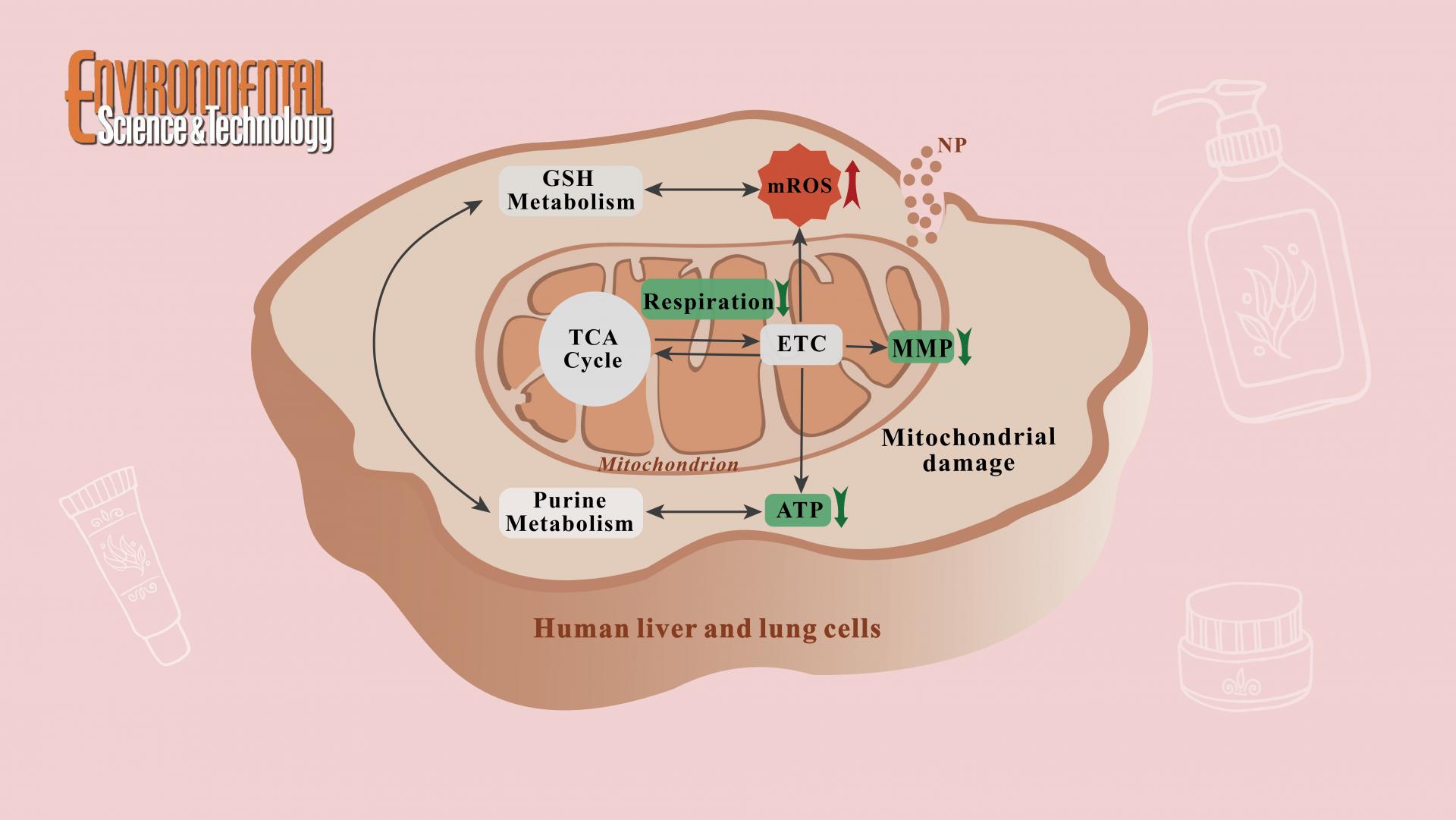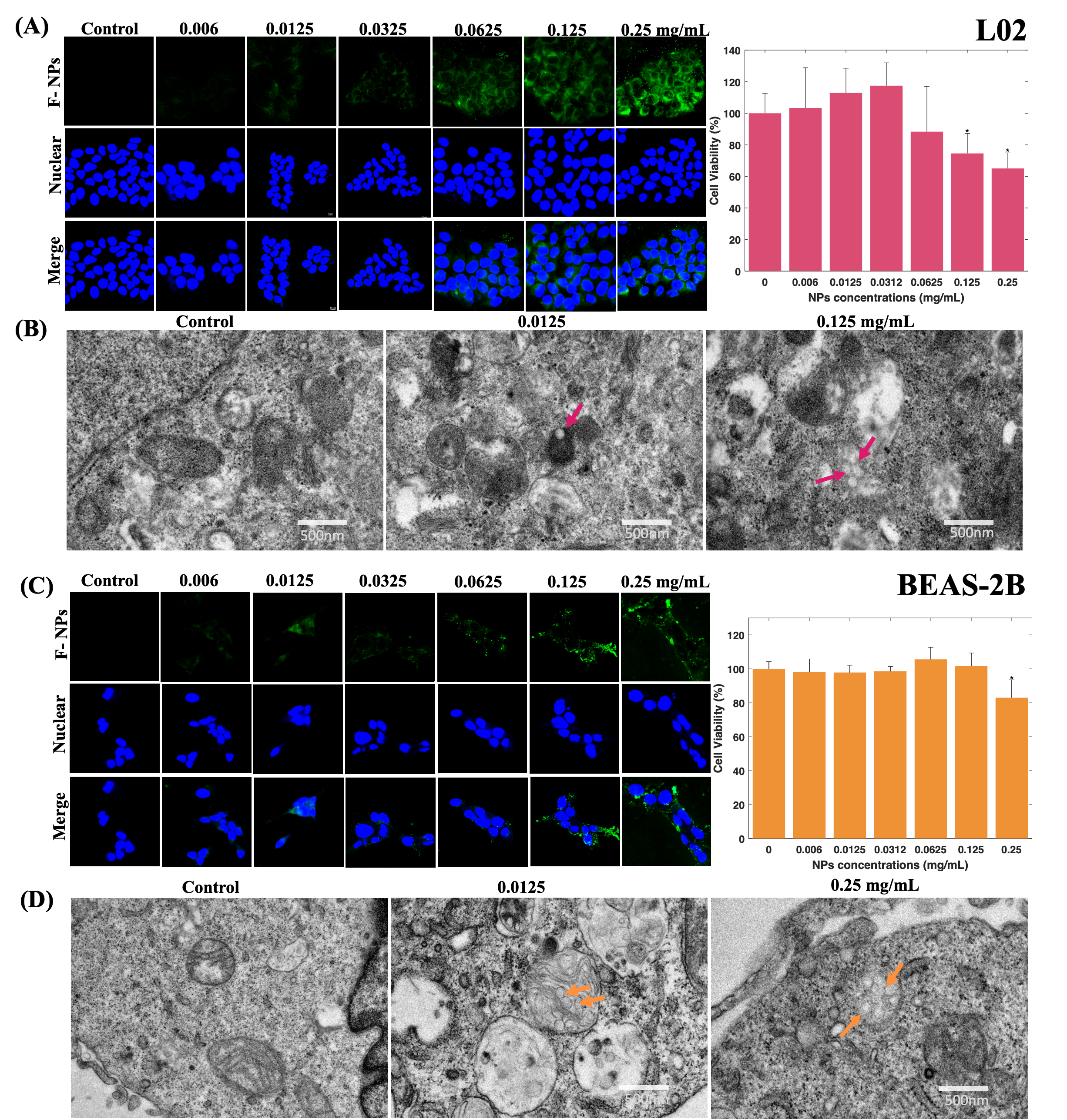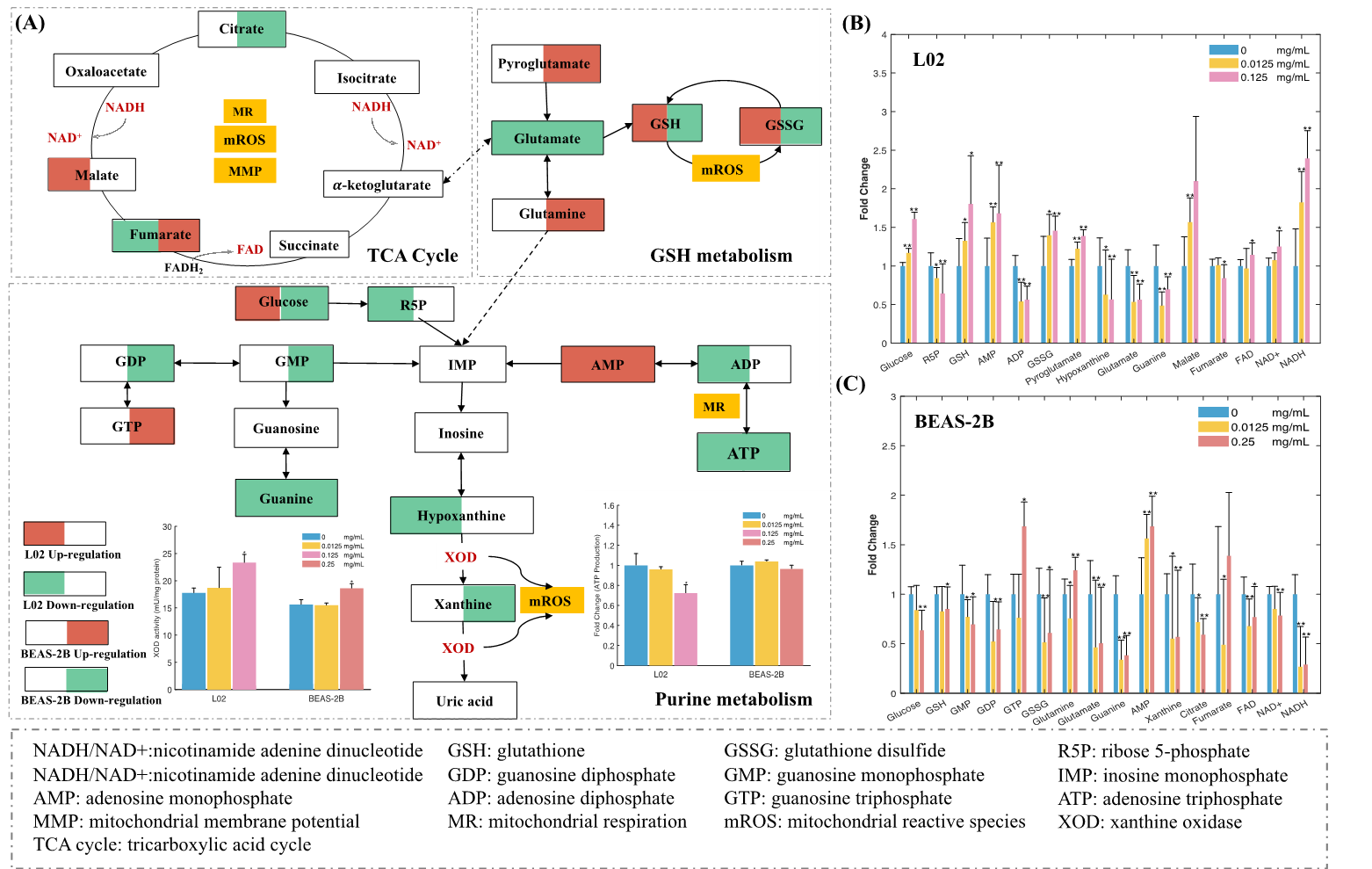Plastic particles with a diameter of less than 0.1 μm (nanoplastics (NPs)) have been extensively manufactured and used as engineered nanomaterials in various products, such as numerous consumer and personal care products (e.g., microbead-containing shampoos and scrubs). Furthermore, human activities have resulted in the discharge of large amounts of plastic waste (~99 million tons), which can continually release secondary NPs during degradation under the action of ultraviolet radiation, mechanical abrasion, and biological processes, leading to environmental contamination. These plastic particles can bioaccumulate in higher trophic biological species via the food chain, which may ultimately result in human exposure. However, the NP-related health impacts on humans are far from understood.
Associations between NP exposure and inflammation, immunotoxicity, and neurological dysfunction have been demonstrated in mice. In vitro data have shown that the internalization of NPs occurs in various human cell lines, indicating that damage to sensitive organelles may be a primary mechanism of NP-induced toxicity in cells. The endoplasmic reticulum (ER) stress-related metabolic changes have been observed after NP exposure in human lung cells, indicating that mitochondrial function is a potential target of NPs. Because the lung and liver are two of the organs most likely to be directly exposed to NPs, there is a need to improve our understanding of the metabolic mechanisms of NP toxicity, such as how NPs interact with organelles and the associated downstream metabolic effects.

Chair Professor Chunmiao Zheng’s research team from the School of Environmental Science and Engineering at the Southern University of Science and Technology (SUSTech) recently collaborated with Chair Professor Zongwei Cai’s group from Hong Kong Baptist University (HKBU) to reveal that NPs can enter normal human liver (L02) and lung cells (BEAS-2B) and cause mitochondrial dysfunction and metabolic disorders.
Their research, entitled “Metabolomics Reveal Nanoplastic-Induced Mitochondrial Damage in Human Liver and Lung Cells,” was published online in Environmental Science & Technology, one of the top journals in environmental research. The research was also highlighted by the American Chemical Society (ACS) press release.

Figure 1. Uptake of 80 nm NPs by normal human hepatic L02 and lung BEAS-2B cell lines and their cell viability at a series of concentrations. The internalization of fluorescent NPs (F-NPs) (A, C) and nonfluorescent NPs via TEM analysis (B, D).
The researchers revealed that NP exposure did not induce mass cell death through their study. However, transmission electron microscopy analysis showed that the NPs could enter the cells and cause mitochondrial damage, as evidenced by overproduction of mitochondrial reactive oxygen species, alterations in the mitochondrial membrane potential, and suppression of mitochondrial respiration.
In particular, these effects were observed in liver cells at low concentrations, which might be comparable to the environmental levels. High-throughput mass spectrometry (MS)-based metabolomics profiling further confirmed that the most significantly impacted processes were mitochondrial-related.

Figure 2. NP perturbed metabolic pathways of the TCA cycle, GSH metabolism, and purine metabolism (A). Relative changes in identified endogenous biomarkers in the normal human hepatic L02 cell line (B) and lung BEAS-2B cell line-2B (C).
The effects observed at the molecular and cellular levels could be considered predisease events to predict NP exposure outcomes at the tissue and organ levels. Thus, the mitochondrial damage observed in this study might cause cells, and eventually organ tissues, to malfunction.
This study provides new insights into NP-induced toxicity pathways and the underlying toxicity mechanisms in human cell lines, and also offers basic scientific data on the health risks of NP exposure in humans.
Siyi Lin, a Ph.D. student of the joint doctoral program between SUSTech and HKBU, is the first author of this paper. Prof. Chunmiao Zheng and Prof. Zongwei Cai are the corresponding authors.
This work was sponsored by the Hong Kong General Research Fund and the National Natural Science Foundation of China (NSFC). Additional supports were provided by the State Environmental Protection Key Laboratory of Integrated Surface Water-Groundwater Pollution Control and Guangdong Provincial Key Laboratory of Soil and Groundwater Pollution Control.
Related links:
Paper link (Environmental Science & Technology): http://pubs.acs.org/doi/abs/10.1021/acs.est.2c03980
American Chemical Society press release: https://www.acs.org/content/acs/en/pressroom/newsreleases/2022/september/nanoplastics-can-disrupt-human-liver-lung-cells-processes-in-lab-experiments.html
To read all stories about SUSTech science, subscribe to the monthly SUSTech Newsletter.
Proofread ByAdrian Cremin, Yingying XIA
Photo By